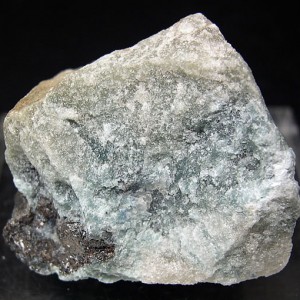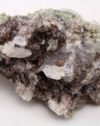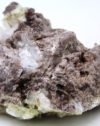HISTORY, NAME, LOCALITIES: Berlinite, pronounced Behr-LINN-ite, was recognized as a mineral species in 1868 after a study of specimens collected at the Västanå iron mine in Sweden. It is named for the Swedish professor and pharmacologist Nils Johan Berlin ((1812-1891). Berlinite is collected in Australia, Brazil, Germany, Rwanda, Switzerland, Spain, Madagascar, and the United States (Arizona).
MINERALOGY, PROPERTIES, OCCURRENCE: Berlinite [aluminum phosphate, AlPO4] crystallizes in the trigonal subsystem of the hexagonal system, usually in massive or granular form. Crystals, which are small and similar to those of quartz, are unusual. It has Mohs hardness of 6.5, a specific gravity of 2.64, a vitreous luster, a conchoidal fracture, and no apparent cleavage. Berlinite is transparent to translucent; it is often colorless, but can also exhibit pale colors ranging from gray and grayish-pink to pink. It is a rare mineral that occurs primarily in high-temperature, metamorphic environments in aluminum-rich rocks, and it is often associated with trolleite.
METAPHYSICAL PROPERTIES, LORE, USES: Berlinite is too rare to have any technological or jewelry uses. It has not been assigned any metaphysical significance.
COLLECTORS’ INFORMATION: Berlinite is collected for its rarity and its association with such chemically similar minerals as trolleite.





 Axinite #10
Axinite #10  Axinite #8
Axinite #8